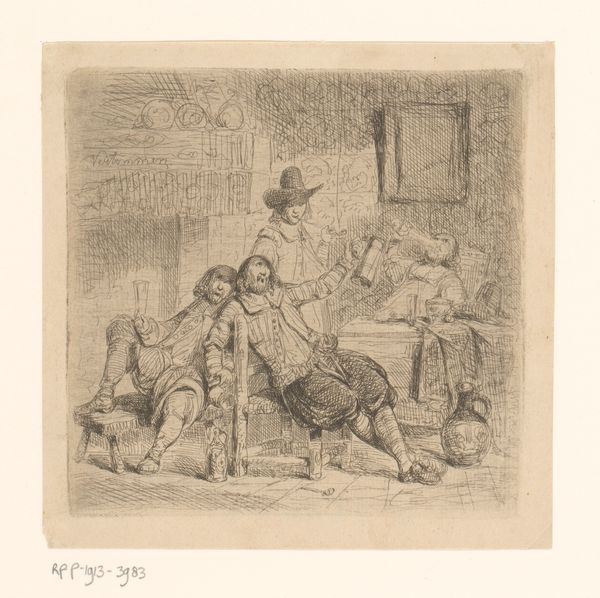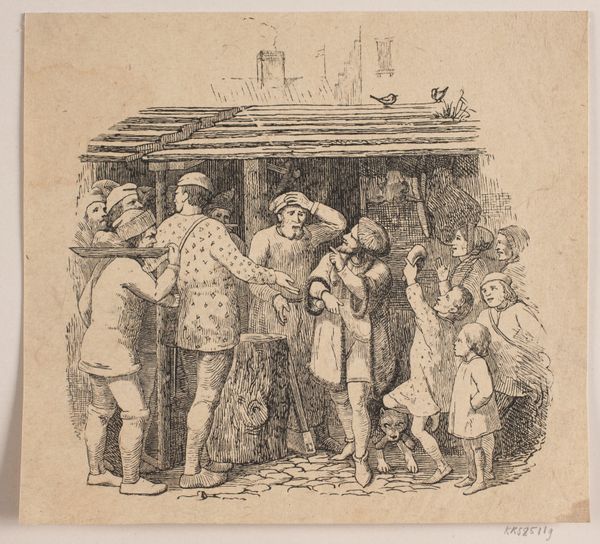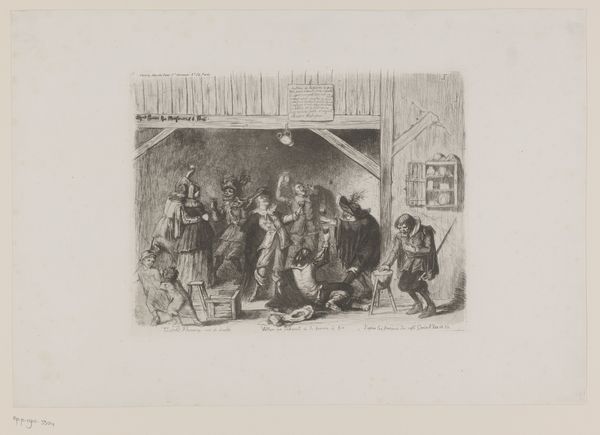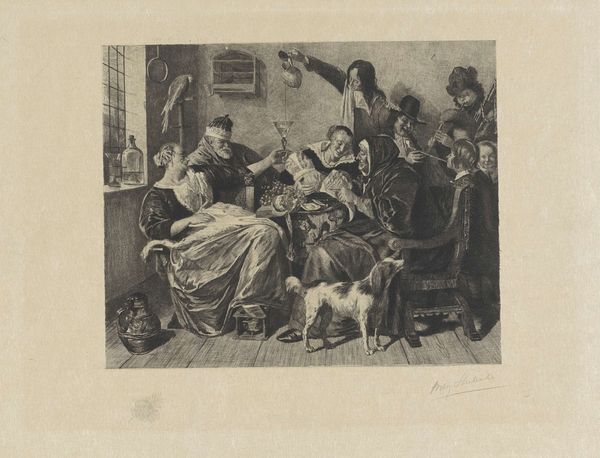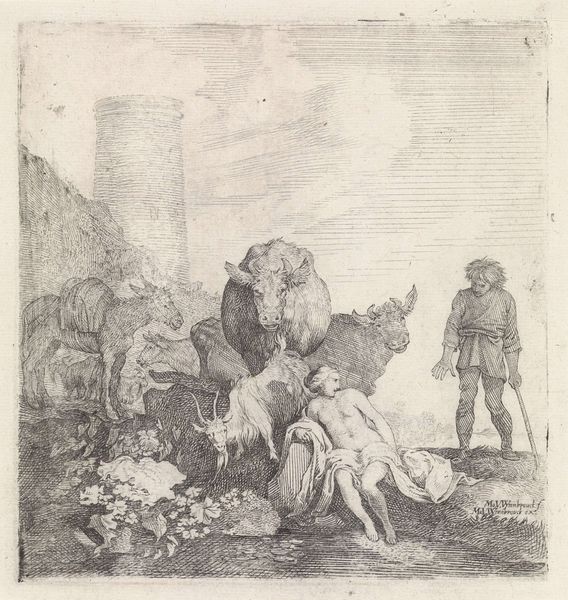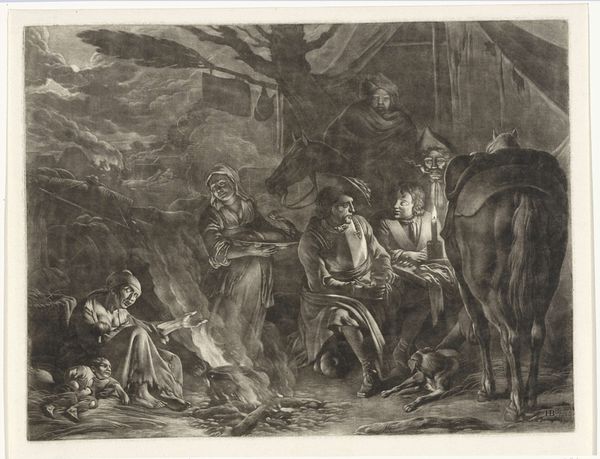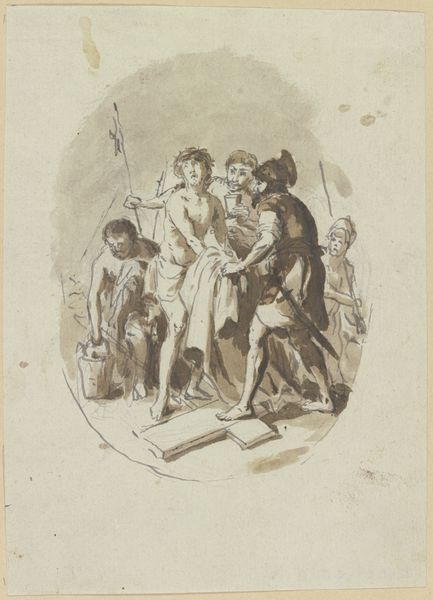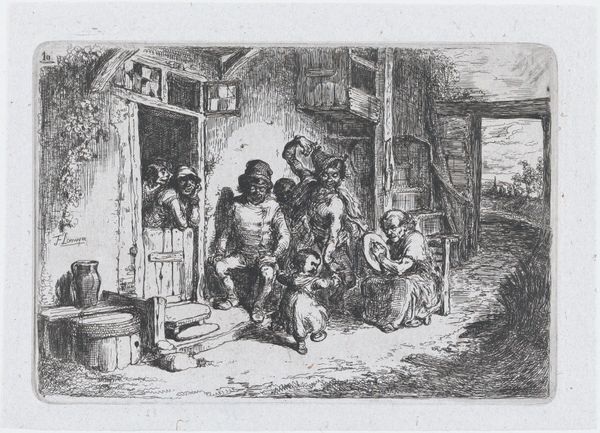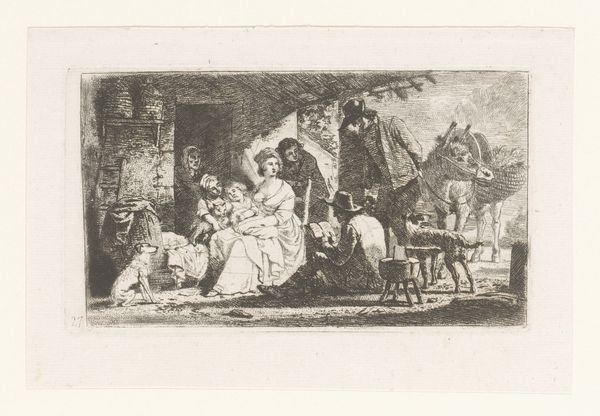
drawing, pencil
#
pencil drawn
#
drawing
#
narrative-art
#
figuration
#
pencil drawing
#
pencil
#
history-painting
Copyright: Public Domain: Artvee
Curator: The first thing that strikes me about this work, Pro Patria Ludux, or "Exercise for the Homeland", is the starkness of the graphite. There's a rawness in the medium that feels almost like a direct transcription of the artist’s initial thought. Editor: The rough sketch-like quality gives it an immediate feeling, like catching a moment in time. Considering the title, the "exercise" aspect highlights repetitive motions in both body and mind, reminding me of how societal roles are enforced through rehearsal. Who created this piece and when, exactly? Curator: The work is by James Ensor. The precise date is, unfortunately, unconfirmed. Yet it invites reflection on how societal mechanisms manifest through both material construction and figurative narratives. Note the layers of marks—evidence of building, erasing, and refining. What meaning do you get from this technique? Editor: For me, the act of building up with lines emphasizes how "homeland" and "patria" are not just given entities but socially constructed spaces. The blurred boundaries and unfinished lines, I feel, subtly expose how the very ideas of nationhood and duty are continuously shaped and reshaped. But the material speaks clearly of classical artistic exercises. It’s an explicit reference to those long academic traditions and power. Curator: Exactly. The contrast of stark lines and suggestive figuration raises many compelling questions. We are compelled to consider our connection to materials. Also how does the medium of drawing affect its production value as opposed to, let's say, oil on canvas? Does its seeming disposability diminish the overall subject? Editor: In looking at the way the figures are posed, though, I also see discussions on visibility and who is afforded historical narrative. These bodies might exist as archetypes within a historical drama, but, at the same time, it gives them a spectral existence. The composition itself feels fragmented. It asks what exactly is our relationship to representations of heritage. Curator: And through exploring the use of pencil and the suggestive strokes that we start to question the purpose of an idealized vision and representation. What should we focus on here; how it's been done or how is represents? Editor: It seems that Ensor's approach forces us to address complex themes in simple strokes. Curator: An economical act both politically and practically. Editor: Definitely. Ultimately it gives an intimate look at the convergence of power, heritage, and individual form, made accessible through such direct action and medium.
Comments
No comments
Be the first to comment and join the conversation on the ultimate creative platform.


